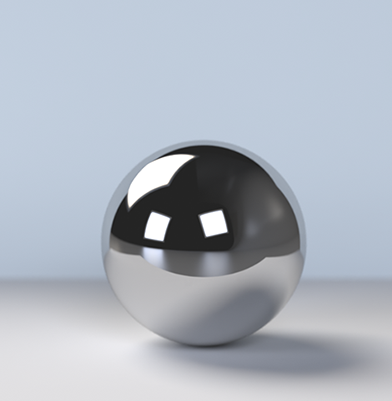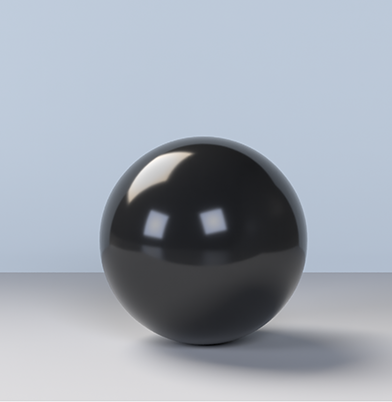FAQ - Microball answers all your questions:
How do ball mills work?
Ball mills are central machines in grinding technology used for crushing and homogenizing products such as pastes and coatings. These products often consist of various raw materials, and their fineness and uniformity are crucial for the quality of the final result.
To achieve an even distribution of the components, mechanical energy is utilized to adjust the size, density, and state of aggregation of the materials.
In rotating drums filled with 25% to 40% resilient grinding balls, the grinding material is crushed by impact, pressure, and shear forces.
The movement of the balls ensures uniform processing of the material. At the same time, chemical attraction forces between the particles are effectively eliminated, and binders are dissolved, resulting in a homogeneous product that is optimally prepared for further processing.
When do the grinding balls need to be
replaced/renewed?
Grinding balls should be replaced when they lose size due to wear, as this decreases their impact force and the efficiency of the grinding process. Deformations, cracks, or breaks are also clear signs that replacement is necessary to avoid contamination of the ground material. If the end product no longer has the desired particle size or homogeneity, or if production speed decreases, worn balls may be the cause. A significant increase in abrasion particles, especially in sensitive applications, also indicates that the balls need to be replaced. Regular inspections help identify these issues early.
To what particle size can a ground
product be reduced?
The average particle size of the ground product after the grinding process is about one-thousandth of the grinding ball size. With a starting size of 3 mm for the grinding balls, an end particle size of approximately 3 micrometers can be achieved. However, the exact particle size also depends on factors such as the material, the grinding process, and the milling technology used. Coarse grinding results in particle sizes of over 100 micrometers, while fine grinding achieves sizes between 10 and 100 micrometers. Ultrafine grinding can reduce particles to 1 to 10 micrometers, and specialized systems can even allow for a reduction to less than 1 micrometer in the nanometer range in certain cases.
What should I consider when selecting balls?
The right choice of grinding ball size is crucial for optimal grinding results. It should be tailored to both the particle size of the raw material before the grinding process and the desired fineness of the end product. A distinction is made between deagglomeration and actual size reduction, as well as between materials that are easy and difficult to grind. Smaller balls are suitable for materials that are easier to grind, while larger grinding bodies work more efficiently on robust, hard-to-grind materials due to their greater weight.
As a general rule, the balls should be two to three times larger than the separator or filter of the mill (e.g., slot screen or filter cartridge). They should also be at least five times smaller than the distance between the mill wall and the stirring disk. At the beginning of the grinding process, the grinding balls should be approximately 20 to 30 times larger than the particles of the unground material.
Grinding Balls
The Key to Efficient Crushing
Grinding balls are essential components of grinding technology and play a central role in the efficient crushing and homogenization of materials such as color pigments, cement, cocoa, and other food products. At microball GmbH, grinding balls are available in various materials, including steel, stainless steel, hard metal, ceramics, and glass, each offering specific advantages for different applications.
The choice of the right grinding body size and type is crucial for the efficiency of the process and the quality of the end product. Grinding balls are used in ball mills and generate impact, pressure, and shear forces through their movement in rotating mills, which crush and evenly distribute the grinding material.
Regular inspections and targeted replacement of worn balls are important to ensure optimal results and to avoid production losses. microball GmbH is happy to assist you in selecting the right grinding ball.
Carbide Grinding Balls
Carbide grinding balls are characterized by their hardness,
wear resistance, and long lifespan, making them ideal for demanding crushing processes. Mainly used in fine grinding and dispersion technology, they efficiently crush metals, minerals, ceramics, and pigments. Their high density and impact strength enable uniform processing of the hardest materials, including hard metal. They are particularly suitable for the mining, ceramics, and chemical industries, where precision and reliability under high loads are essential.
Glass Grinding Balls
Glass balls are versatile and chemically neutral grinding bodies that are particularly suitable for applications where purity and elasticity are important. They are lead-free, colorfast, and food-safe, making them ideal for use in the food and pharmaceutical industries as well as in paint manufacturing. Despite their lower density, they provide reliable performance even in stirrer ball mills and minimize the risk of material contamination.
Stainless Steel Grinding Balls

Stainless steel balls are ideal for applications with high hygiene and corrosion resistance requirements. They resist rust and chemical attacks, making them optimal for aggressive environments. For grinding, stainless steel balls are often used in the food and pharmaceutical industries due to their ease of cleaning and ability to maintain sterile conditions, which is crucial to avoid contamination and ensure product quality.
The hardness and strength of stainless steel provide a long lifespan for the grinding balls, even with intensive use.
Ceramic Grinding Balls

Ceramic balls are excellent grinding bodies for crushing and mixing materials. Thanks to their special hardness, they ensure efficient crushing and minimize contamination of the grinding material. Due to their high resilience and low wear, they are well-suited for both wet and dry grinding in industrial processes.
Steel Grinding Balls
Steel balls are extremely effective grinding bodies due to their high weight. They are suitable for both wet and dry grinding and are used even in demanding areas such as the medical industry. They are also employed in the crushing of aggressive media, such as acids and alkalis. Whether steel balls are the best choice depends on the material to be processed and the specific application.
Submit Request
Request Now
If you have any questions or can't find the
right material, feel free to contact us –
as a provider of grinding balls, we will find the ideal solution together.
Contact
Do you have questions about our products, features, or would you like an initial consultation without any obligation?
Feel free to contact us!